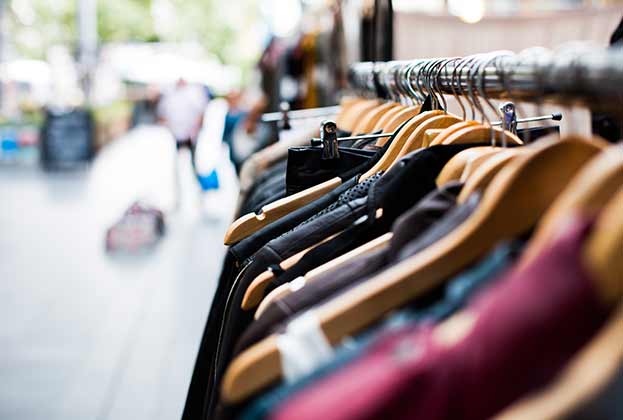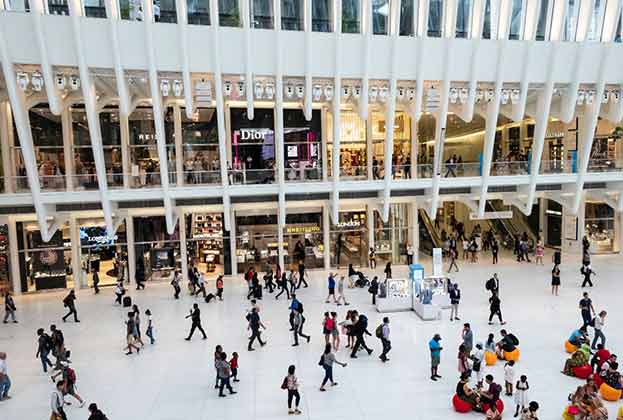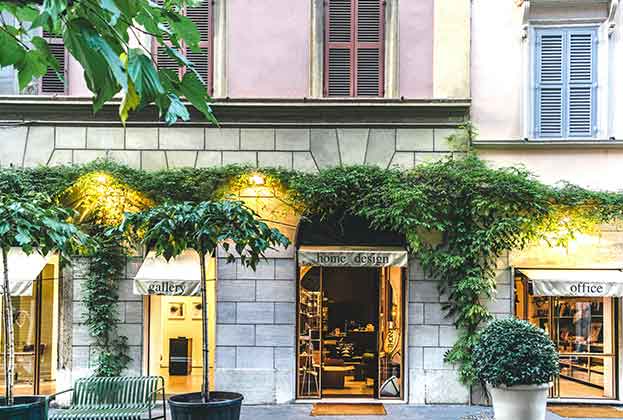Footfall and spend rebounded quicker in 2021 compared to reopening periods in 2020, following widespread pent-up demand and vaccination confidence
Consumer and consumption trends
Footfall recovery across the UK remains unequal, depending on exposure to overseas tourists and office workers
The UK retail and leisure markets have been well-positioned to benefit from the reopening of various parts of the economy since April. This has been particularly driven by significant pent-up demand to spend following over 14 months of amplified household savings and prolonged periods of restrictions. The added assurance generated by vaccination confidence has resulted in a far quicker initial recovery this time around. Footfall and sales, therefore, experienced sharper month-on-month improvements compared to the reopening stages in 2020.
According to Google data, mobility across retail and recreation locations improved to its highest post-pandemic average monthly level of -12.8% in July 2021, compared to a pre-Covid baseline. Footfall recovery plateaued following an initial early summer boost at the start of June, generated by the reopening of hospitality, good weather, and easing of social restrictions.
In line with the ongoing limits placed on international travel, key domestic staycation markets continue to show substantial growth in retail mobility compared to the pre-pandemic benchmark. This includes key coastal markets such as Cornwall, Pembrokeshire and Blackpool, each experiencing levels considerably higher than pre-Covid levels.
City locations continue to lag behind the national average, owed to a lack of international tourism and a more structural changes office worker preferences. London mobility remains subdued, averaging -30.6% in July 2021 compared to the pre-pandemic baseline, albeit representing the smallest gap since the onset of Covid-19, supported in part by the easing of social distancing restrictions as well as London beginning to host a number of large-scale events (such as multiple Euro 2020 matches).
The easing of all final restrictions from 19 July has brought about marginal footfall improvements UK-wide, generated largely by the start of the summer school holidays and more households beginning to take domestic trips. However, the poor weather and some hesitancy due to the spread of the Delta variant may have limited potential growth.
Looking ahead, it’s likely staycation markets will continue to drive UK footfall growth through the summer months. Meanwhile, recovery across cities could begin to pick up pace in line with more organised events and a gradual return to offices for some companies.
Pent-up demand generates strong bounce-back in UK retail sales although ongoing caution exists
In line with restrictions easing since April, retail sales have enjoyed a few months of relatively strong growth. Appetite to spend remains elevated following almost 15 months of restrictive measures, with GfK’s major purchase index rising seven points in July, edging closer to pre-pandemic levels. According to ONS figures, retail sales in June 2021 exceeded expectations, increasing 0.5% compared to May whilst representing a 7.9% increase against equivalent 2019 levels.
Following the reopening of non-essential retail stores, fashion sales saw a substantial rise in monthly spend through April and May. Meanwhile, spend on DIY and household items remains elevated against pre-pandemic levels, consistent with the strong housing market following the stamp duty holiday.
However, it was strong food and drink sales which prompted noteworthy sales growth in June, in line with the Euro 2020 tournament. On a month-on-month basis, food store and alcohol sales grew 4.2% and 5.6%, respectively.
Meanwhile, fuel and automotive sales continued to gather pace in June, up 2.3% month-on-month, as further restrictions eased and people began travelling more frequently, both to the office and for UK staycation trips.
Looking ahead, while appetite to spend and pent-up demand remains high, a hesitancy over shopping trips caused by concerns over Covid variants and vaccine efficiency exist. However, with ongoing cross-border restrictions in place over the summer period, it’s likely the UK will enjoy another boom in staycation trips and therefore domestic retail spend.
Online retail sales penetration reduces post-lockdown albeit remains elevated against pre-Covid levels
Ecommerce growth has been a key theme across the retail landscape for a number of years. The pandemic and subsequent lockdowns intensified this, with internet retailing peaking during the height of the lockdowns, accounting for 36.3% of UK retail spend in both November 2020 and January 2021. However, this has since softened as restrictive measures have eased, with online sales in June accountable for a 26.1% share of total UK retail sales.
Online retail sales, as a proportion of total UK retail sales, have softened since the peak during lockdowns, to record 26.1% in June 2021
Sam Arrowsmith, Director, Commercial Research
Looking ahead, internet sales are forecast to settle at between pre-Covid and peak lockdown levels, with an estimated penetration rate of around 26.3% by 2022, according to GlobalData (see chart, below). This is more than five years earlier than previously anticipated and yet not an irreversible trend in shopping as has previously been reported in the press.
The remaining 73.7% of retail sales will still be accounted for through physical stores, emphasising the ongoing pivotal role of bricks and mortar. The importance of omnichannel retail has become vital for the existence of many retailers, with efforts to improve click-and-collect accelerating over the past 12 months, somewhat reinforcing the need for an element of physical presence.
So the question perhaps isn’t whether physical retail is necessary or not, but how much is needed, with ‘rightsizing’ becoming a feature of most retail-related agendas.
Retail warehousing finds itself in the most advantageous position in its relationship with online purchasing. Products typically sold out-of-town are still those more defensive to online retailing than is true of a number of goods traditionally sold on the high street. That was the case before the pandemic and remains so despite it. Food & Grocery (87%), DIY & Gardening (82%), Homewares (74%) and Furniture and Floorcoverings (71%) all have the majority of sales fulfilled directly in-store (see chart, below). Consumers in the main, still want to see and touch items typically sold in the out-of-town retail sector, especially those with a higher price point. Furniture operators in particular are considered ‘showroom’ retailers and therefore operate differently to those where product is going out through the front door.
The importance of omnichannel retail has become vital for the existence of many retailers, with efforts to improve or introduce click-and-collect accelerating this year, somewhat reinforcing the need for an element of physical presence. Once again this has proven itself to be the feather in the cap for out-of-town retail destinations, their large and comparatively low-rented units, combined with high car parking provision, means the sector has proven itself to be ideally suited for servicing click-and-collect orders, customer returns and home deliveries.
Click-and-collect growth
Spend in this arena is indeed forecast to increase by £3.1bn in the next five years across all of UK retail, rising 45.8% to reach £9.8bn by 2024. The outlook for a physical store presence remains positive, notwithstanding the fact click-and-collect is also a significant driver for capturing additional sales in the market at the point of order fulfilment. The true value of the store can therefore not be underestimated. Operators that have adopted a clear and structured omnichannel approach to their business models, are those that have recognised the importance of a well-placed store network to truly fulfil their online business, as much as is necessary for the traditional off the shelf transactional side of their operations.
The chart below highlights how the growth of click-and-collect is set to significantly outpace that of ecommerce over the next five years, across nearly all retail sectors, particularly those pertinent to the out-of-town market. This is unsurprising considering the online market is maturing and levelling out at a quarter of all retail spend, whilst click-and-collect growth is starting from a much lower base. However, it does make the point that this is considered to be a key growth area for many retail operators going forward.
The grocery sector is leading the way when it comes to its omnichannel approach
Online grocery sales have seen the largest increase across all sub-sectors in the last 12 months, with expenditure increasing by 86.5% to £20.9bn in 2020, compared to 10.8% growth to £11.2bn in 2019. This significant shift has resulted in the online grocery market changing the most since the outbreak, with penetration jumping by 5.1 ppts to 12.5%, with this rise expected to be sustained in 2021.
However, despite this, food and grocery is still the sector with the strongest store sales, accounting for 87% of the overall expenditure in the sector. Furthermore, the significant rise in online grocery sales has only been achievable due to the network of stores already in place for operators with an online purchasing and delivery platform. The widespread store networks of operators such as Tesco, Sainsbury’s, Morrisons, Asda and Waitrose is what puts them close to their customers and enables them to get their products, particularly those that need to be temperature-controlled, on our doorsteps quickly and easily.
Tesco has recently eluded to ‘owning the last mile’ in this way, as a means to scale up deliveries without heavy capital expenditure. They have pointed out that in-store that micro-fulfilment centres can be installed in just a few months at a much lower capital cost, as opposed to up to two years for a large automated warehouse.
Anecdotally, interest has returned once more to out-of-town supermarkets with the largest floorplates, as operators look to combine a traditional customer-facing foodstore with a semi-automated picking centre for online delivery, located at the back of house. Sainsbury’s decision to close its ‘dark store’ in Bromley-by-Bow in London would suggest online fulfilment is better served from trading stores. By March next year, more than 20 stores in and around the capital are expected to expand their online packing capabilities, enabling Sainsbury’s to deliver thousands more orders each week. Asda has also announced plans to shut two of its online warehouses, switching from its dark stores in Dartford, Kent, and Heston, west London, to picking grocery orders from the shelves of local stores.
It could be argued that fulfilling online orders in this way essentially translates to store sales anyway, at the very least it relies on the relationship with the physical store, highlighting its true value and continued importance going forward. It is not just supermarket operators that have begun to recognise the importance of their store network in fulfilling online consumer demand. For Kingfisher (including B&Q and Screwfix), growing online sales is a key strategic priority, with investment in the channel allowing them to respond quickly and effectively to changing consumer behaviour during Covid-19.
Online sales rose 158% during FY2020/21, driven by strong growth in click-and-collect (+226%) which now accounts for 78% of group online sales, up 16 ppts on last year. In other words, more than three-quarters of their online sales require their network of stores for fulfilment, which of course has the added bonus of driving additional consumer sales to the store at the point it is collected.
The propensity of retail operators to recognise retail warehousing as a solution to their ‘last mile’ customer fulfilment requirements is becoming increasingly common and will undoubtedly gain more traction in the coming years. Indeed, CACI reports that the highest online grocery penetration is in locations with a strong store presence, so there remains synergy between online and offline.
Read the articles within Spotlight: UK Retail Outlook Report below.
.jpg)


